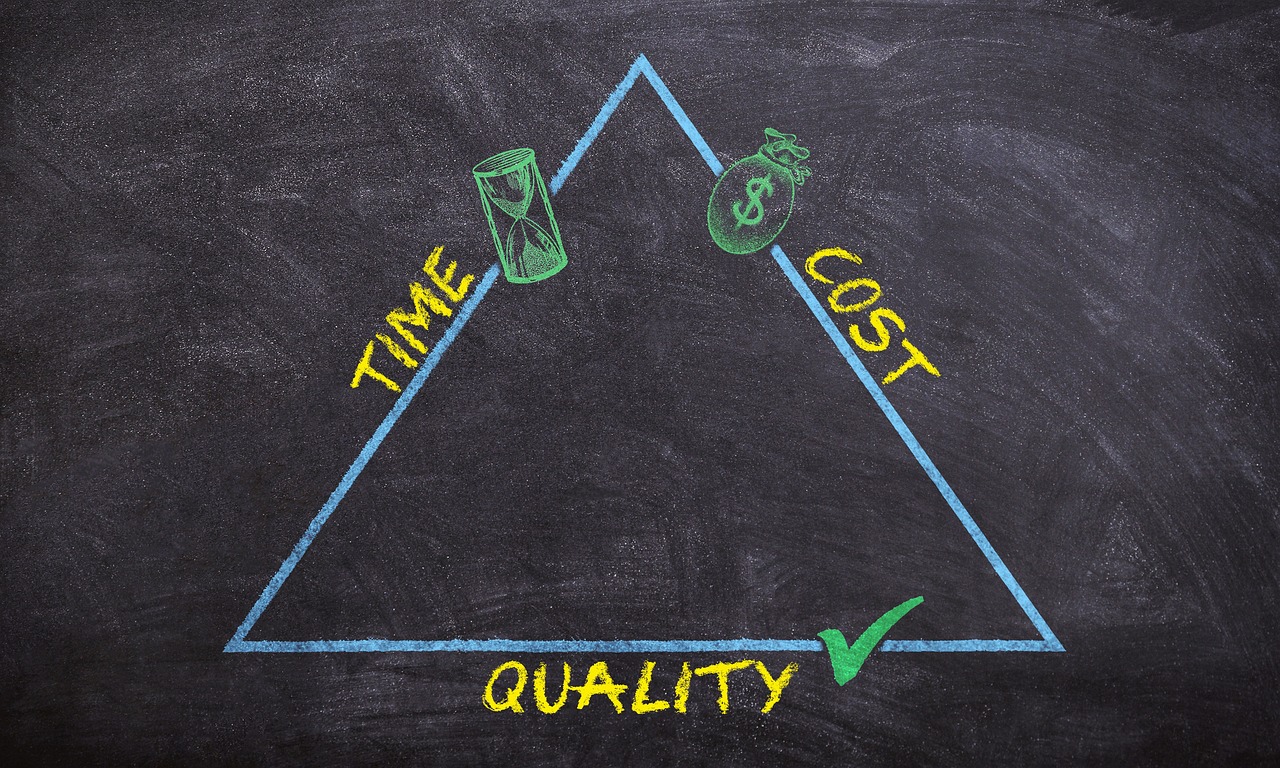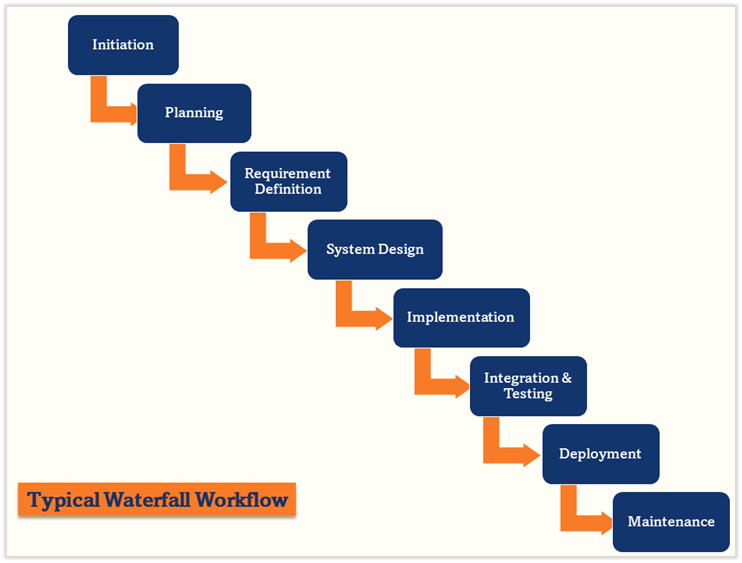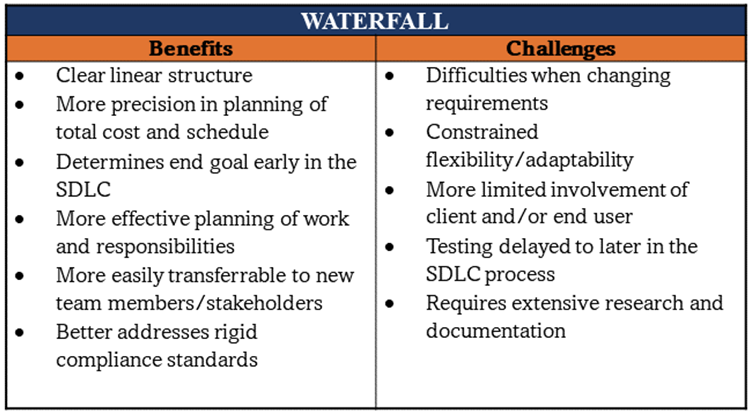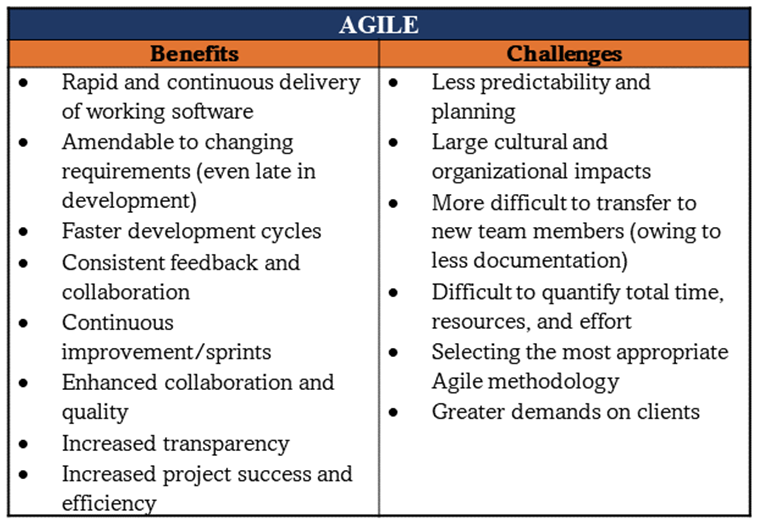Project Management: Is a Hybrid Model Right for You?

In the field of project management and software development, several distinct approaches are available for adoption, depending on unique factors of the specific initiative, such as organizational capabilities, timeline expectations, and skillsets of the project team(s). At its core, there is a healthy debate across the industry between the flexible, iterative approach of Agile and the structured, traditional approach of Waterfall.
In the current landscape of rapid digital transformation and general preference for speed and adaptability, Agile evangelists have fervently championed wider use of this methodology to meet the evolving, ever-changing demands organizations and project managers continually face. However, both Agile and Waterfall drive tremendous benefit when utilized correctly, ensuring projects are successfully delivered on-time, within budget, meet critical functional requirements and intended user experiences. But what about leveraging the power of both approaches, using a hybrid model to attain the benefits of Agile and Waterfall simultaneously? What processes would this entail, and which organizations may want to consider a hybrid model?
Agile vs Waterfall – Benefits and Challenges
Before diving into the depths of a hybrid model, it’s important to understand Waterfall and Agile independently and how these approaches are used to organize and execute projects.
As the more traditional approach, Waterfall methodology is highly-structured, well-defined and documentation heavy, moving complex projects forward stage by stage. Outside of the initial planning stage, work is compartmentalized and communication with business leaders or other non-technical stakeholders is not strongly emphasized. This provides a clear definition of roles and responsibilities, at each point throughout the software development life cycle (SDLC). Following a linear strategic approach and detailed documentation of processes, projects under the Waterfall method are more easily transitioned between different teams or groups if handover is needed.

In comparison, the Agile method reflects its moniker, moving projects ahead with more speed, visibility and adaptability. Instead of relying on rigid structure and formalized documentation, Agile values flexibility and frequent communication with non-technical stakeholders throughout the entirety of the development initiative. As advocated in the Manifesto for Agile Software Development, this approach frees project teams of time spent in documentation, and accelerates the delivery of working software, with the goal of presenting a minimum viable product that can be consistently improved upon until satisfaction is reached by key stakeholders. Because of its concentration on iterative sprints and releasing workable software, Agile projects tend to move faster and have a higher success rate given its capability to cycle through sprints with a greater pace and accuracy.
Closely related to Agile, organizations often apply DevOps to meet their continuous development/continuous deployment (CI/CD) needs, bringing together developers and key business groups with IT operations teams to better execute their releases. This marriage between Agile and DevOps pushes forward the development pipeline and can provide automation for enhanced delivery.
Both Waterfall and Agile methodologies hold a variety of benefits and challenges to consider, as provided below:

 Wagile: Leveraging a Hybrid Approach
Wagile: Leveraging a Hybrid Approach
Now that we have a foundational understanding of Waterfall and Agile as independent methodologies, how can a hybrid approach be used and what circumstances would benefit most from this integration of methodologies?
An effective hybrid model between these two approaches leverages Agile methodology within a larger Waterfall context. Industry practitioners have coined this approach Wagile, a portmanteau of Waterfall and Agile, signifying Waterfall planning techniques are leveraged while delivering through executing Agile sprints. This includes maintaining the strategic initial planning stages and a workable threshold for documentation but accelerates the pace of entering sprints for development and testing. Furthermore, clients or key end-users are extensively involved throughout the entire initiative, providing necessary feedback, updates and expectations to ensure projects fit their desired needs and real-time changes to those needs.
According to ServiceNow, factors that have set the stage for wider use of hybrid methodologies such as Wagile include increased project complexity, increased market competition and evolving customer expectations. As organizations attempt to keep pace with their business goals, it becomes more appropriate to consider a customized project management model that can comprehensively organize intricate requirements as well as improve the speed at which software is deployed and projects reach resolution.
Some of the clear benefits of this hybrid approach is its ability to address a wide range of project types and specific organizational needs. In this project management model, mapping is understood from start to finish of the project and key visibility into the project status is available each step of the way. It also allows for detailed customization and as-needed adaptation responding to stakeholder feedback or issues within the application that need to be remediated. In essence, this model allows project managers and the organizations they serve to wield the best aspects of both Waterfall and Agile methodologies. Furthermore, the Wagile framework is flexible enough to account for a DevOps approach as well, supporting development initiatives that require multiple, continuous releases.
Critics of the Wagile approach cite its risk of diluting the speed of a pure Agile approach and disrupt the control of a Waterfall-based method. Specific challenges with following a hybrid model typically include having to overcome the organizational mindset of how projects are “supposed to be run”.
Organizations must deeply consider their current personnel and capabilities before fully committing to a hybrid approach, but if done right, this holds the potential to address organizational hurdles which slow-down and prevent the progress of significant digital transformation initiatives.
Organizational Assessment
How do you know if your organization is ready to adopt an Agile or hybrid approach?
Consider conducting a readiness assessment to gain key insights into your internal capabilities. Does your IT organization have sponsorship of senior management and key stakeholders? Are stakeholders ready to commit to frequent collaboration with the development team? Is the development team adequately trained and tooled for Agile or hybrid work? Organizations must thoroughly prepare to best position themselves for success.
Contact Us
If you are interested in developing or sharpening your Agile capabilities, to be able to leverage either a hybrid or Agile-based approach, consider partnering with a firm such as Seneca Resources. We offer expert Agile training services to guide organizations into maturity, increasing their ability to deliver faster, more effective technology solutions and achieve their all-important business goals.
To help with your IT Consulting needs, reach out to Seneca Resources at (703) 390-9099 or info@senecahq.com.

 Wagile: Leveraging a Hybrid Approach
Wagile: Leveraging a Hybrid Approach